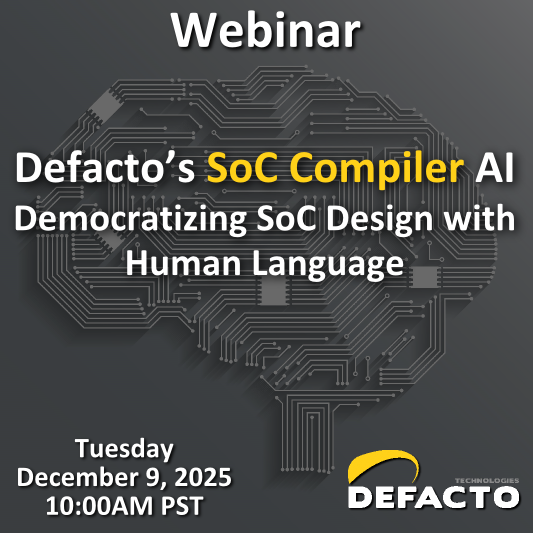The TSMC Open Innovation Platform (OIP) Ecosystem Forum kicked off on September 24 in Santa Clara, CA. This is the event where TSMC recognizes and promotes the vast ecosystem the company has created. After watching this effort grow over the years, I feel that there is nothing the group can’t accomplish thanks to the alignment and… Read More
Author: Mike Gianfagna
Analog Bits Steps into the Spotlight at TSMC OIP
Webinar Preview – Addressing Functional ECOs for Mixed-Signal ASICs
An engineering change order, or ECO in the context of ASIC design is a way to modify or patch a design after layout without needing to re-implement the design from its starting point. There are many reasons to use an ECO strategy. Some examples include correcting errors that are found in post-synthesis verification, optimizing … Read More
Tessent MemoryBIST Expands to Include NVRAM
The concept of built-in self-test for electronics has been around for a while. An article in Electronic Design from 1996 declared that, “built-in self-test (BIST) is nothing new.” The memory subsystem is a particularly large and complex part of any semiconductor design, and it’s one that can be particularly vexing to test. Design… Read More
PDF Solutions Adds Security and Scalability to Manufacturing and Test
Everyone knows design complexity is exploding. What used to be difficult is now bordering on impossible. While design and verification challenges occupy a lot of the conversation, the problem is much bigger than this. The new design and manufacturing challenges of 3D innovations and the need to coordinate a much more complex … Read More
Synopsys Enables AI Advances with UALink
The evolution of hyperscale data center infrastructure to support the processing of trillions of parameters for large language models has created some rather substantial design challenges. These massive processing facilities must scale to hundreds of thousands of accelerators with highly efficient and fast connections.… Read More
Perforce Webinar: Can You Trust GenAI for Your Next Chip Design?
GenAI is certainly changing the world. Every day there are new innovations in the use of highly trained models to do things that seemed impossible just a short while ago. As GenAI models take on more tasks that used to be the work of humans, there is always a nagging concern about accuracy and bias. Was the data used to train the model … Read More
Weebit Nano Moves into the Mainstream with Customer Adoption
Disruptive technology typically follows a path of research, development, early deployment and finally commercial adoption. Each of these phases are difficult and demanding in different ways. No matter how you measure it, getting to the finish line is a significant milestone for any company. Weebit Nano is disrupting the way… Read More
PDF Solutions and the Value of Fearless Creativity
PDF Solutions has been around for over 30 years. The company began with a focus on chip manufacturing and yield. Since the beginning, PDF Solutions anticipated many shifts in the semiconductor industry and has expanded its impact with enhanced data analytics and AI. Today, the company’s impact is felt from design to manufacturing,… Read More
DAC TechTalk – A Siemens and NVIDIA Perspective on Unlocking the Power of AI in EDA
AI was everywhere at DAC. Presentations, panel discussions, research papers and poster sessions all had a strong dose of AI. At the DAC Pavillion on Monday two heavy weights in the industry, Siemens and NVIDIA took the stage to discuss AI for design, both present and future. What made this event stand out for me was the substantial… Read More
Synopsys Webinar – Enabling Multi-Die Design with Intel
As we all know, the age of multi-die design has arrived. And along with it many new design challenges. There is a lot of material discussing the obstacles to achieve more mainstream access to this design architecture, and some good strategies to conquer those obstacles. Synopsys recently published a webinar that took this discussion… Read More


















Jensen Huang Drops Donald Trump Truth Bomb on Joe Rogan Podcast